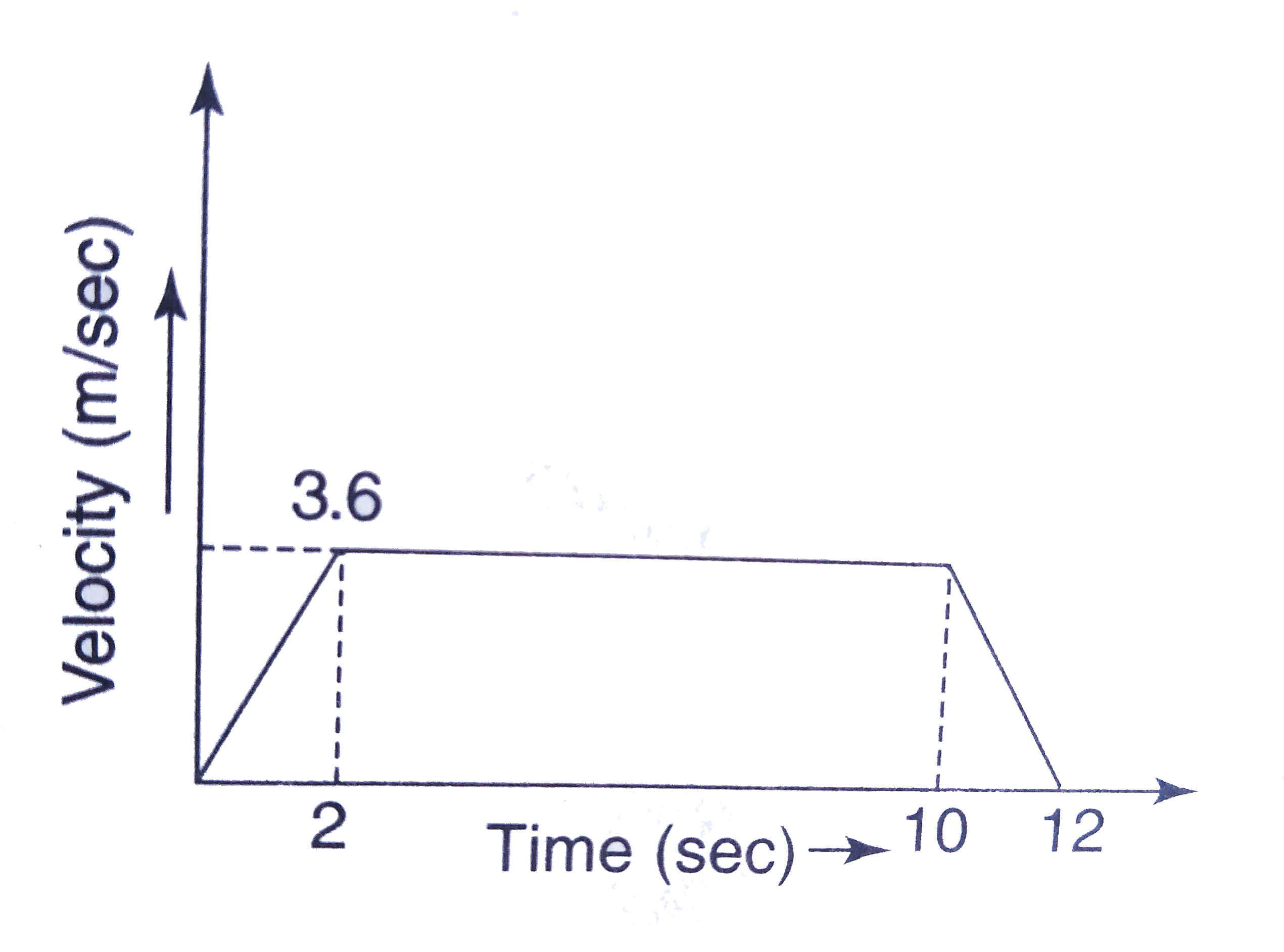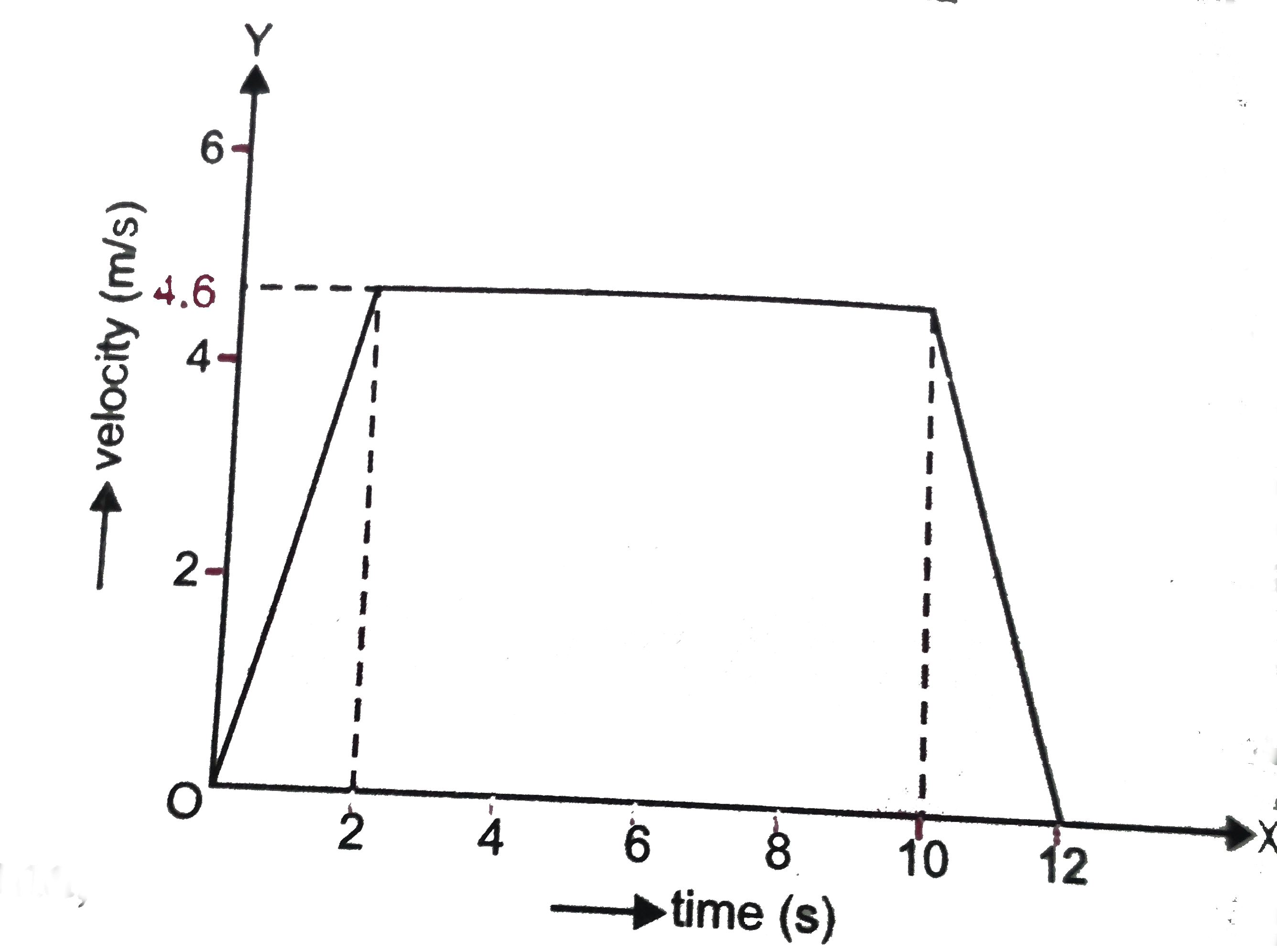The displacement- time graph of a lift climbing from the ground floor to the top of the building is given here. Which of the following statements are true about the graph?

(i) At point A, the lift is stationary.
(ii) Velocity of lift is decreasing from point B to C.
(iii) At point C, the lift is at zero velocity.
(iv) Velocity of lift is minimum at B.
(i) and (iii) only
(ii) and (iv) only
(i), (ii) and (iii) only
(ii), (iii) and (iv) only
The correct Answer is:C
According to displacement time graph: At point A, displacement is zero so lift is stationary. From point A to point B, lift is moving with increasing speed. At point B, lift has maximum velocity. After point B, speed of lift starts decreasing till point C and at point C, lift stops, i.e., it has zero velocity at point C.
Topper's Solved these Questions
- FORCE AND PRESSURE BOOK - MTG IIT JEE FOUNDATIONCHAPTER - FORCE AND PRESSURE EXERCISE - EXERCISE (INTEGER/NUMERICAL VALUE TYPE)
5 Videos
- FOOTSTEPS TOWARDS NEETBOOK - MTG IIT JEE FOUNDATIONCHAPTER - FOOTSTEPS TOWARDS NEETEXERCISE - MCQ
45 Videos
- FRICTION BOOK - MTG IIT JEE FOUNDATIONCHAPTER - FRICTION EXERCISE - OLYMPIAD/HOTS CORNER
15 Videos
Similar Questions
Give the name of the points in a stationary wave at which (i) velocity is zero (ii) displacement is zero and (iii) strain is maximum.
View SolutionA lift is going up. The variation in the speed of the lift is as given in the graph in the graph. What is the height to which the lift takes the passengers ?

View Solution
Knowledge Check
A lift is going up. The variation in the speed of the lift is as given in the graph in the graph. What is the height to which the lift takes the passengers ?
 A3.6mB28.8mC36.0mDCannot be calculate from the above graph.
A3.6mB28.8mC36.0mDCannot be calculate from the above graph.When a mass is suspended from the end of wire the top end of which is attached to the roof of the lift, the extension is 'e' when the lift is stationary . If the lift moves up with constant acceleartion g/2 the extension of the wire would be
A2e3B3e2C2eD3eA lift is moving down with acceleration a. A man in the lift drops a ball inside the lift. The acceleration of the ball as observed by the man in the lift and a man standing stationary on the ground are respectively
A(a) g,gB(b) g-a, g-aC(c) g-a, gD(d) a,g
"A lift is ascending with decreasing speed". What are the directions of velocity and acceleration of the lift at the given instant.
View Solution"A lift is ascending with decreasing speed". What are the directions of velocity and acceleration of the lift at the given instant.
View Solution"A lift is ascending with decreasing speed". What are the directions of velocity and acceleration of the lift at the given instant.
View SolutionThe velocity - time graph of an ascending passenger order lift is given in figure. What is the acceleration of the lift:
(i) during the first two seconds ,
(ii) between 2nd and 10th second,
(iii) during the last two seconds. .

View SolutionA lift is moving down with acceleration a. A man in the lift drops a ball inside the lift. Find the acceleration of the ball as observed bt the man in the lift and a man standing stationary on the ground
View Solution
